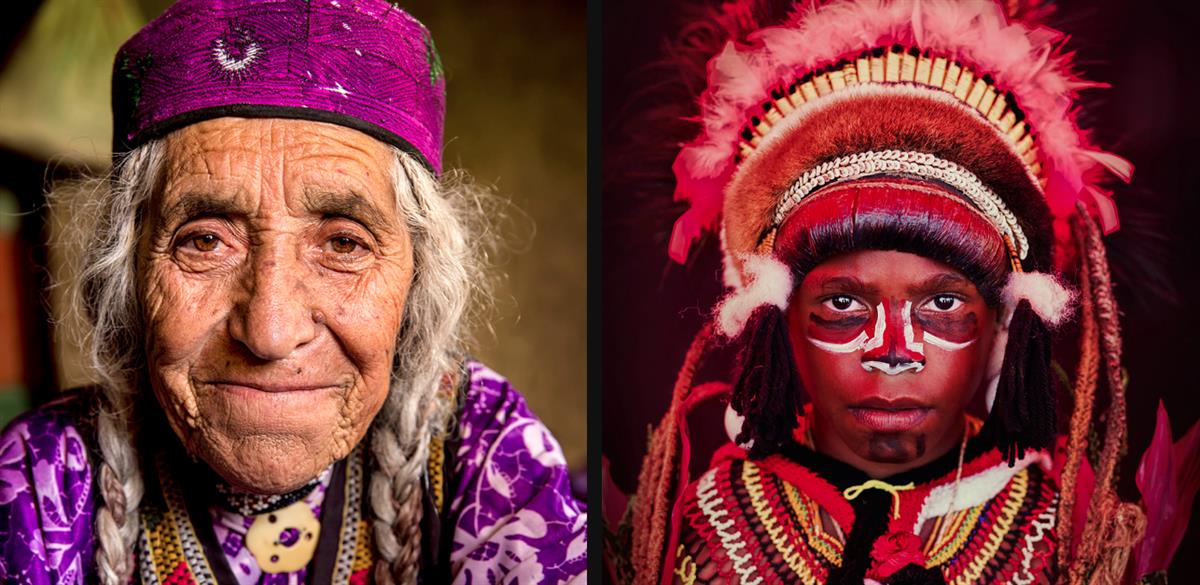
Khik woman: Wakhan Valley, Badakhshan, Afghanistan Papuan girl: Massy, Western Highlands of Papua New Guinea
TO VIEW THE EXHIBITION PLEASE FOLLOW THIS LINK: THE WORLD IN FACES
Diverse cultures of the world through the portraits of Indigenous Peoples
This exhibition honors Indigenous Peoples’ right to their cultures, identities and traditions, and their right to self-determination by determining their own policies and strategies with respect to their cultural heritage and traditional systems. These rights are enshrined in many of the articles of the United Nations Declaration on the Rights of Indigenous Peoples (UNDRIP), for example in the Preamble, Articles 2, 3, 11, 12, 13, and 31 of the UNDRIP and throughout the ILO C169.
The exhibition was designed and shown in 2019, during the United Nations Permanent Forum on Indigenous Issues, celebrating Indigenous Peoples' cultural diversity, which was one of the pillars of the UN’s International Year of Indigenous Languages. The exhibition is even more important today with the upcoming United Nations International Decade of Indigenous Languages (2022-2032). The term “Indigenous Peoples” is a common denominator for more than 476 million people, spread across more than 90 countries around the world who, through historical processes, have been denied their right to control their own development. As distinct peoples, they claim the right to self-determination, including the right to control their own political, social, economic and cultural development.
The exhibition showcases photographs that display the incredible diversity of Indigenous peoples’ cultures through portraits of individuals from different parts of the world in their traditional clothing and environment. As you look at these photos, we hope that you will see not only the individual, but the communities and the Indigenous Peoples they represent.
SOURCE: UNITED NATIONS EXHIBITS